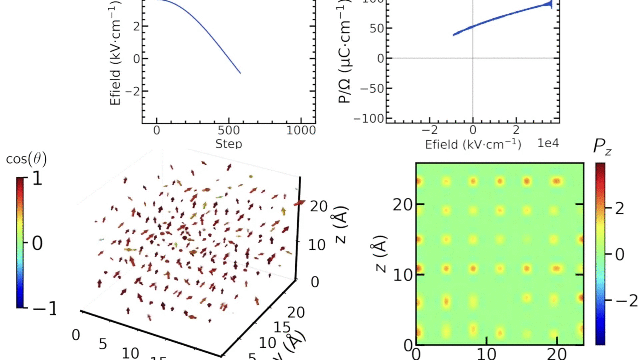A team at Harvard SEAS has broken new ground with a machine learning framework that predicts how materials respond to electric fields and delivers quantum-level accuracy for massive simulations, extending capabilities from hundreds to millions of atoms.
The research, published in Nature, introduces a unified differential framework for learning the generalized potential energy and the response functions to external stimuli within a single ML model.
The Challenge of Modeling Electric Response
Traditionally, density functional theory (DFT) offered the most precise approach for simulating atomic and molecular properties. However, DFT’s steep computational requirements limited its use to small-scale systems.
While machine learning made strides in scaling quantum insights, accurately capturing how materials respond to electric fields remained out of reach due to limitations in representing physical symmetries and conservation laws.
The Harvard researchers overcame these obstacles by developing a machine learning architecture that unifies energy and polarization, the two essential quantum properties, within a single potential energy function.
Their breakthrough, Allegro-pol, extends the Allegro neural network to accurately simulate not just atomic movements but also responses to external electric fields, all grounded in solid physics.

What Makes Allegro-pol Different?
- Massive Scalability: Allegro-pol enables simulations of systems with hundreds of thousands to a million atoms, far beyond the reach of previous quantum methods.
- Quantum-Level Accuracy: The model is rigorously trained and tested against DFT data, ensuring both energetic and electrical predictions are precise.
- Wide Applicability: Allegro-pol has been demonstrated to predict infrared and electrical properties of silicon dioxide and to model complex phenomena like ferroelectric switching in barium titanate under changing temperatures and fields.
These advancements open up new possibilities for designing next-generation technologies, such as non-volatile memory, advanced capacitors, and energy storage devices, where understanding electric response at the atomic scale is critical.
The Future of Materials Discovery
Lead author Stefano Falletta, now at Radical AI, highlights that foundational models like Allegro-pol are poised to dramatically accelerate the pace of materials discovery. As computational resources and generative models improve, the integration of machine learning into materials science promises breakthroughs that were previously unimaginable.
The field is evolving rapidly, with more sophisticated theories, powerful machine learning models, and ever-increasing computational speed shaping the future of simulation.
A Collaborative and Supported Effort
This pioneering work was led by Falletta in collaboration with Boris Kozinsky’s group at Harvard SEAS. It included contributions from Andrea Cepellotti, Anders Johansson, Chuin Wei Tan, Marc L. Descoteaux, Albert Musaelian, and Cameron J. Owen.
The project received backing from the National Science Foundation, U.S. Department of Energy, Department of Navy, and Robert Bosch LLC; emphasizing the broad interest in advancing material modeling capabilities.
Harvard’s Allegro-pol represents a major advance in simulating the electric properties of materials at unprecedented scales. By merging quantum accuracy with machine learning efficiency, this innovation accelerates research and lays the foundation for discovering transformative new materials.
Source: Harvard John A. Paulson School of Engineering and Applied Sciences – News, June 6, 2025

How Machine Learning is Driving Atomic-Scale Material Simulations